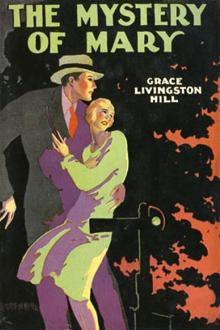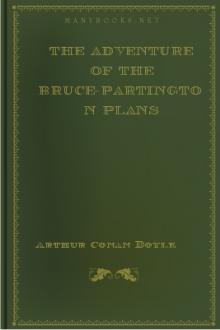the king south east by jalal nono (top 10 novels of all time .txt) 📖

- Author: jalal nono
Book online «the king south east by jalal nono (top 10 novels of all time .txt) 📖». Author jalal nono
BUSINESS PLAN FRAMEWORK
The more uncertain and shifting the environment becomes the more important it is for arts organisations to have a clear sense of purpose: to think and act strategically… That does not mean detailed and inflexible long-term plans. Nor should it be a licence for navel gazing… An organisation that lacks an animating sense of purpose risks being pushed and pulled in many directions… Arts organisations operate in increasingly crowded and competitive markets, with multiple partners, with different goals and performance measures, mixing commerce and cultural creativity. In such a fluid environment, stability does not come from structure but from having an enduring sense of purpose.
A business plan is the confident expression of your organisation’s chosen direction. It is integral to performance management, and influenced, but not determined, by funding.
A coherent business plan will enhance the success of your organisation. A well-structured plan that is not too long (10–20 pages), will be regularly referred to by your organisation’s Board and staff, and will be a useful tool for monitoring your organisation’s functionality and effectiveness. It can also be a useful and quick way for potential benefactors to understand your organisation’s overall purpose and the ways in which you will work towards that purpose.
Funding agencies will expect a multi-year (three, four or five years) business plan for your organisation with the following core components:
Purpose (also known as Mission or Vision);
Executive Summary;
Context (your internal and external environment, markets and competition);
Goals;
Key Performance Indicators;
Strategies;
Artistic Program;
Marketing Plan;
Financial Plan; and
Management: Organisational Structure, Governance, Succession Plan, Risk Management.
Your organisation might prefer to use different terminology.
Below are explanatory notes on each section followed by a suggested structure for key components (see Sample Business Plan Components) and core elements for a marketing plan (see Companion Resource: Core Elements of a Strategic Marketing Plan).
PurposeThe Purpose is a simple statement that is inspiring and yet concisely outlines your organisation’s key reason for existing. It should be five lines or less.
The Purpose should be much more forward-looking than the Goals; it does not need to be achievable within the duration of the business plan. However it should be faithful to the objects outlined in your organisation’s constitution.
Executive SummaryThe Executive Summary should be less than one page and follow the structure of the whole document. It should be the last thing you write and should encapsulate and distil the strategic direction of the document. It should be written for the person who will read the organisation’s Purpose and the Executive Summary only. Do not presume that someone reading the Executive Summary will read further (though funding agencies will read your whole plan).
ContextThis section will summarise the strategic issues facing the organisation having assessed the internal and external environment to identify the organisation’s strengths and weaknesses, opportunities and challenges. It is a distillation of analysis and research undertaken by your organisation.
HistoryThis should be a brief overview of about three paragraphs summarising when your organisation was set up, for what reason, and the impact of significant achievements, events and milestones that your organisation instigated or reacted to over the years.
Internal SituationThis should be a short but comprehensive evaluation of your organisation. It should highlight strengths while acknowledging weaknesses. It should cover any major structural strengths and weaknesses, reputation and include an analysis of your organisation's current financial situation (including details of annual income and expenditure, current levels of assets and liabilities and an assessment of any existing financial risks). It could include a couple of stories of real impacts you have made over the last few years (e.g. an international conference or tour, unexpected national exposure, discovering emerging talent etc).
External SituationThis may be one to two paragraphs on your external situation as it is now – concentrating on positive opportunities while remembering potential threats, is important. Consider who are your local, national and international peers against whom you benchmark your organisation? Who are your stakeholders? This section also articulates the key trends and issues about the environment in which your organisation exists – now and in the immediate future. This will probably include any social, technical, environmental, economic, political, legal, or arts sector trends, which may affect the direction that your organisation chooses to take (e.g. changes to tax laws affecting philanthropy; people wanting to interact with or co-create the art they engage with; impact of online communities and interactive web technologies).
MarketsA market is any broad collection of people who might have an interest in exchanging something, coming into contact engaging with your organisation. These may include visitors, ticket buyers, workshop participants, clients, referrals, members, volunteers, funding bodies, sponsors and philanthropists.
Define your current markets
This should be based on any research or facts. Describe your market in terms of the key common factors that bind each group (e.g. young adults who respond to the latest trends in new media). It may be that demographic factors such as education level, income and age are not so important as other factors such as hobbies or attitudes. Consider who creates your support base? What other markets are strategically important to you? If you have segmented your markets, a summary of your analysis should be here.
Clarify what you offer your markets
To encourage regular engagement with your organisation, people need to feel welcomed and benefit from their experience of your organisation. Your particular environment and internal strengths must be exploited to give your market(s) an experience, service or an object that they feel nothing else can offer. Pinpoint the experience that your organisation offers and how it is unique from your markets’ perspective (i.e. the emotional, physical, social benefits and value you deliver to them).
Choose the strategic direction your organisation wishes to take with regard to markets.
Consider whether you want to strengthen relationships with existing markets (e.g. attract those people who usually come once a year three times per year instead). Or do you want to develop new markets (e.g. attracting people over 60 years of age)? This direction should take into account what is feasible within the resources available. Consider which partners you will work with to move in this direction (e.g. like-minded organisations, local businesses, international organisations and sponsors etc).
 However, all readers - sooner or later - find for themselves a literary genre that is fundamentally different from all others.
However, all readers - sooner or later - find for themselves a literary genre that is fundamentally different from all others. 




Comments (0)